"Dishing It Up" with May Irwin – How to Have a Real Thanksgiving
by: Emily St. Marie with Karen Killian
This Thanksgiving article by May Irwin from 101 years ago was a lucky find! While making a book out of May’s previously known 22 cooking columns, which ran in the New York Evening Journal in 1922, we came across this article in a newspaper archive. (Read about it TI Life, April 2023 here.) It’s all about May and her Thanksgiving dinner and how she made her guests feel at the meal.
It includes May’s method of making cranberry sauce. According to May Irwin, “It’s more sociable to put it in one large mold,” and that made Karen reminisce about the way her mother served it at dinner when she was growing up.
“My Mother had a copper fluted mold with a cluster of fruit on the top once it was unmolded. It was always the centerpiece of her holiday table and so delicious. It is the one thing I still make all year round—real cranberry sauce. It‘s so easy to make and I buy enough fresh cranberries so that I always have them in the freezer when I want to make a batch.”
Since we are bringing historical traditions to light, Karen also talks about how her family celebrated the holiday, especially the care in dressing the table.
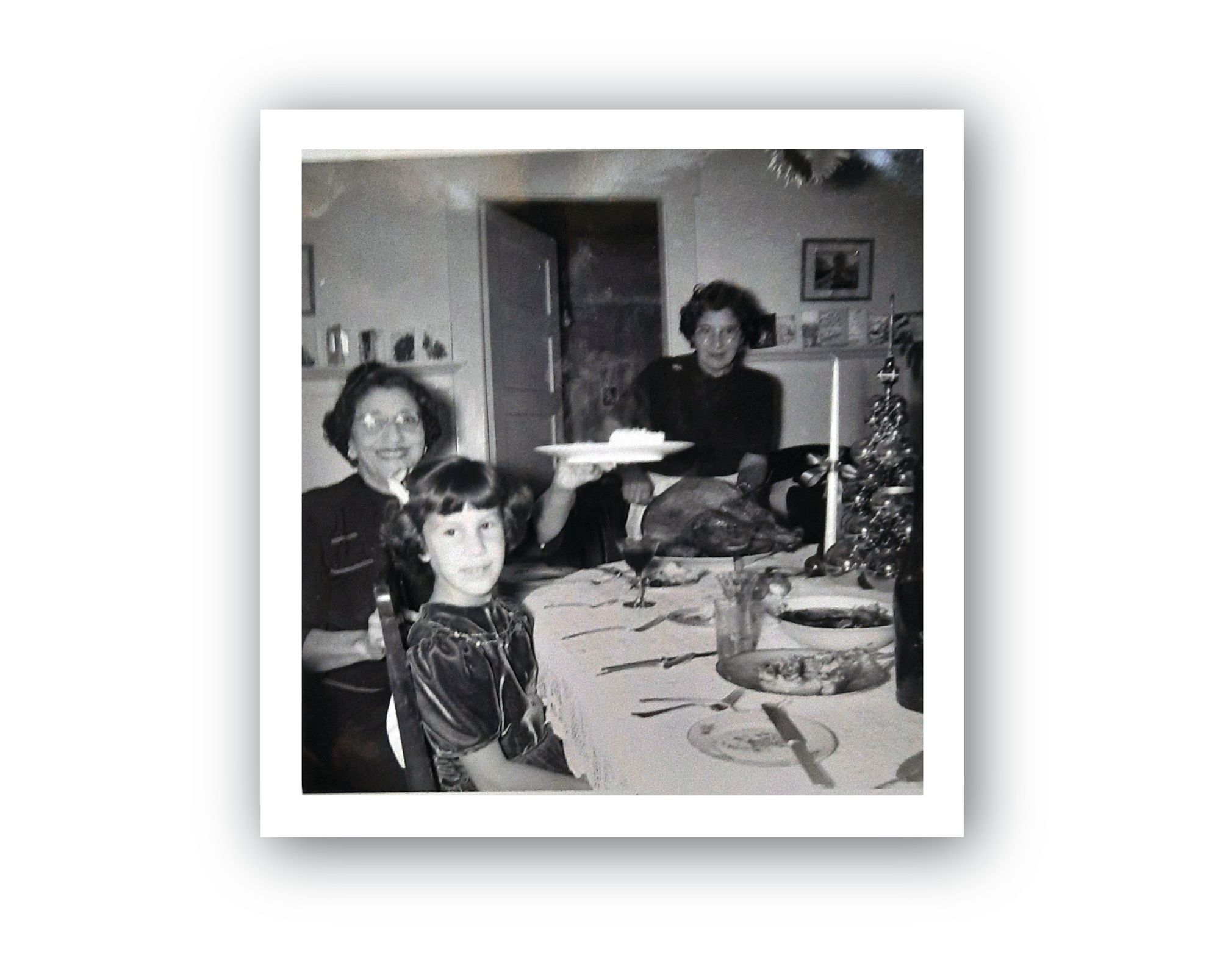
“My Mother had inherited some small cut glass individual serving dishes for mixed nuts. Each place setting would have that little cut-glass dish filled with an assortment of nuts. She also used to can pears and color them green or red. When it was time for the holidays, she would put them on a bed of iceberg lettuce with the pear being the center of attention and adorn them with either cottage cheese or an assortment of fresh fruit that was in season. And she’d top it off with a maraschino cherry for color and drama.”
In 1922, cooking a turkey and all the fixings on a coal burning stove was a lot of work. So, eating out for the Thanksgiving meal was a way many people celebrated, rather than attempting to cook a lavish dinner in their own kitchen. Going to a restaurant or hotel for the occasion saved on both cooking and doing the dishes afterwards, whether or not your wife could cook!
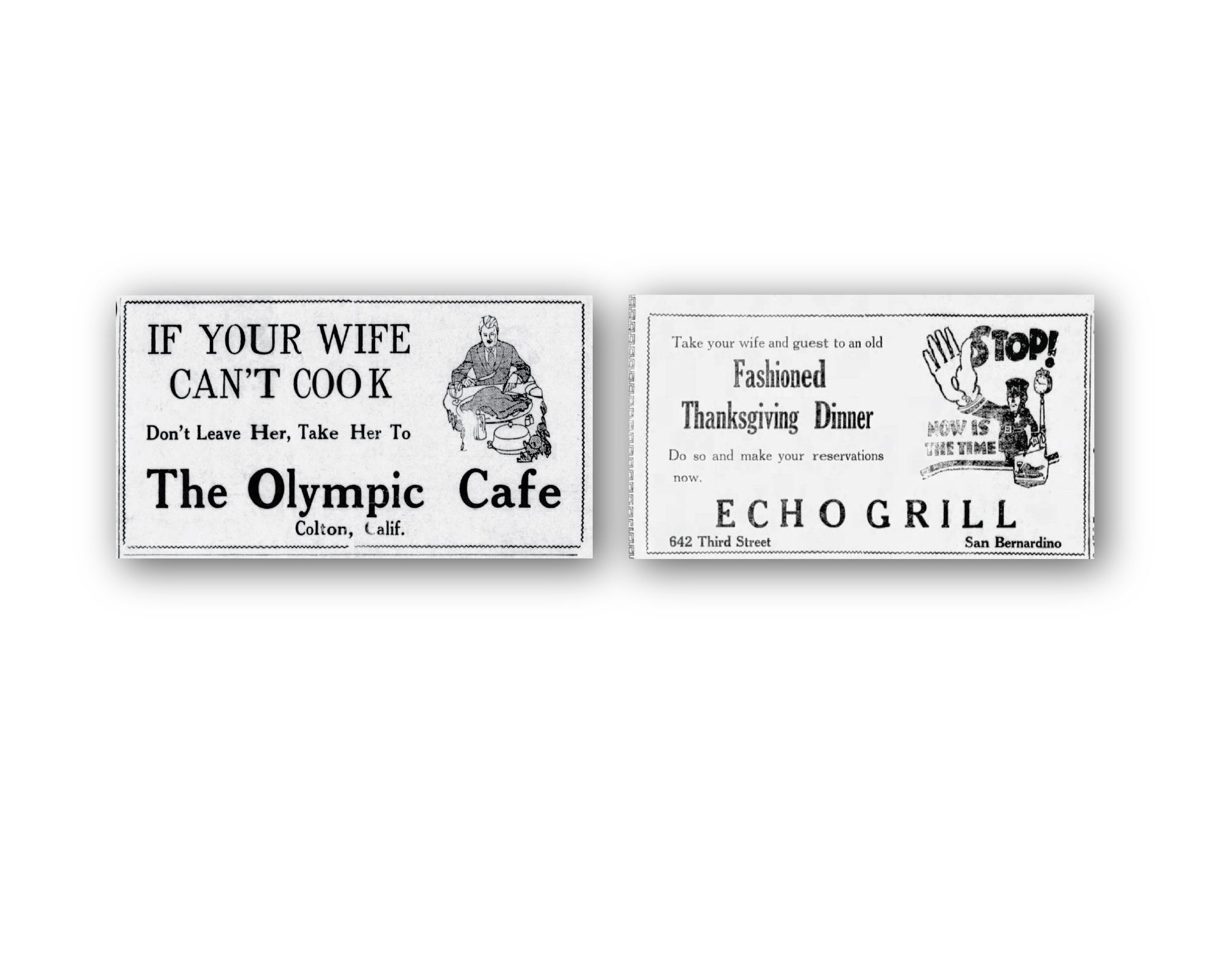

During this time, marketers were trying to see what else went with Thanksgiving. Ever heard of Thanksgiving chrysanthemums? Thanksgiving baking, Thanksgiving candy, Thanksgiving oysters, and Thanksgiving ice cream? Just a few of the ads we found advertising the holiday to consumers.
May Irwin, our cheerful social commentator, does not have a high opinion of restaurant Thanksgivings, and has offered her menu for Thanksgiving dinner, to be cooked at home. She calls on the reader to invite a guest away from home to a family dinner, to spare them “the tragedy of a restaurant meal on that especial holiday.” What was available on that day if you did happen to go to a restaurant? There seems to be a wide range of options. Here are some other Thanksgiving menus from 1922.
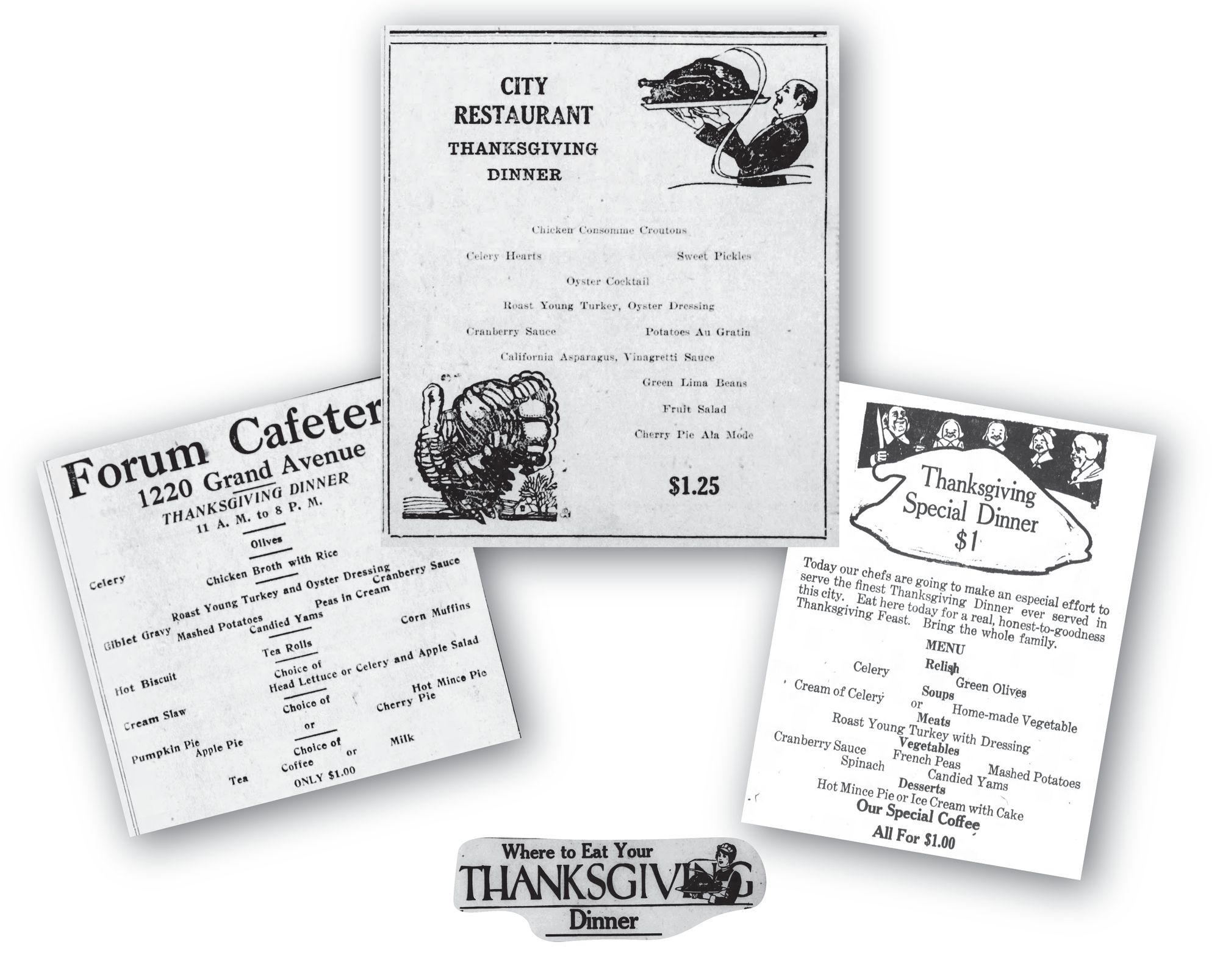
A menu for the Woman’s Exchange at 222 East Main Street offers Turkey with Nut Dressing, Escalloped Oyster, Drawn Butter, and French Ball Potatoes, with English Plum Pudding for dessert. Another offers “Thanksgiving Soup.” Still another offers Oyster Cocktails and Roast Young Turkey with Oyster Dressing.
The star ingredient of the show in 1922 may come as a surprise to modern audiences. It was celery! True to form, even though May Irwin’s Thanksgiving menu is simple and uncluttered, she makes a point of specifying the Thanksgiving table should include “plates of home made pickles, and homegrown celery ‘settin’ around.’”
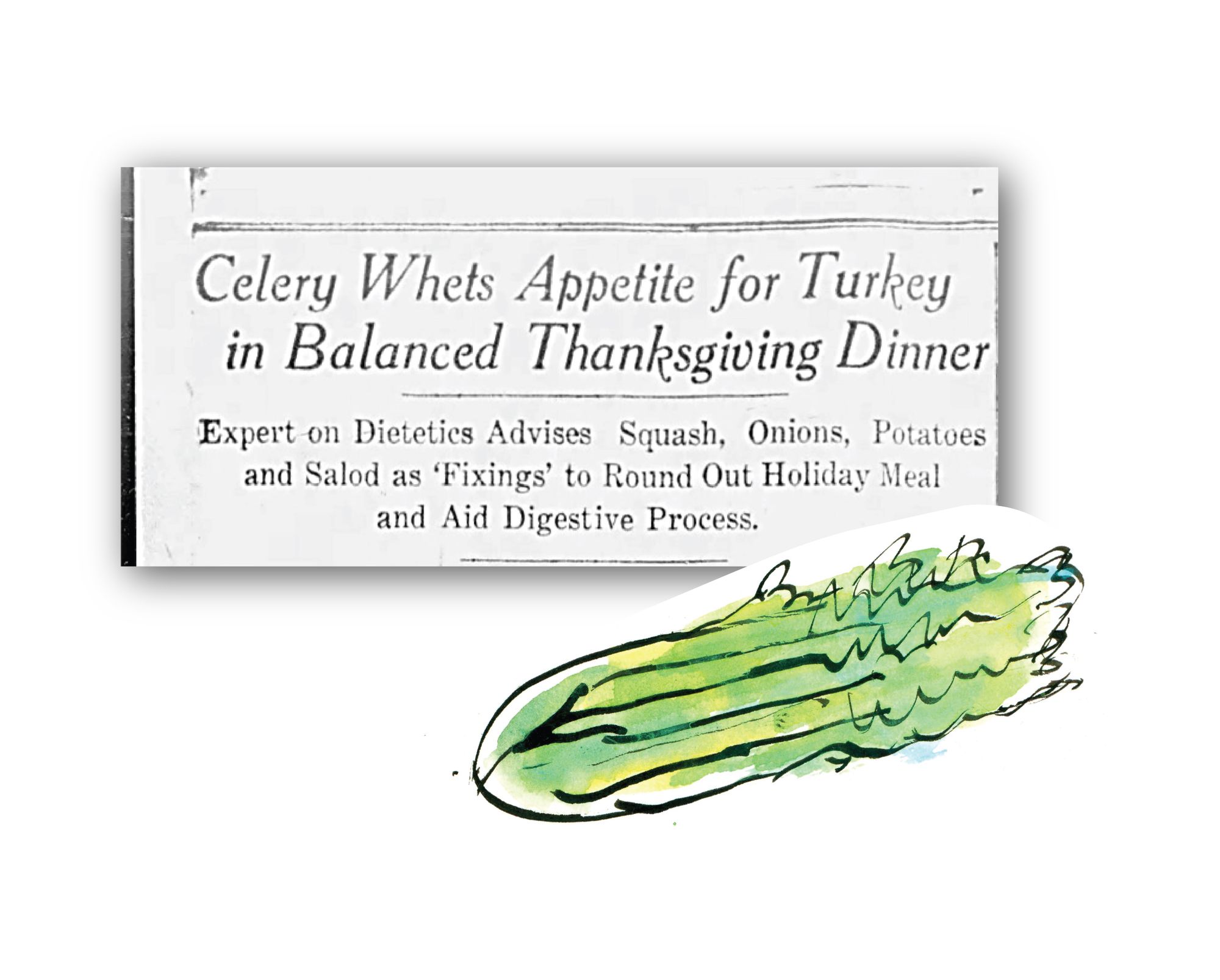
Before we give you the article to read, one final note about the author. May mentions her son coming to be with her for Thanksgiving dinner—few people know that in her younger days, she was a single mother of two. Her first husband, Keller, died in 1886, which would have made the boys maybe five and three years old. She somehow carried on with a career and was in constant motion for the rest of her life, while remaining a devoted mother.
In the summer of 1922, the same year May Irwin published this article, tragedy struck the household. Her older son, Walter, died. Walter’s absence at the Thanksgiving table that year must have prompted May to ponder happier times. Even in midst her personal pain, she endeavored to cheer up those around her, offering words of wisdom for creating a happy feast at home. Please enjoy this article on Thanksgiving, in May Irwin’s own words.
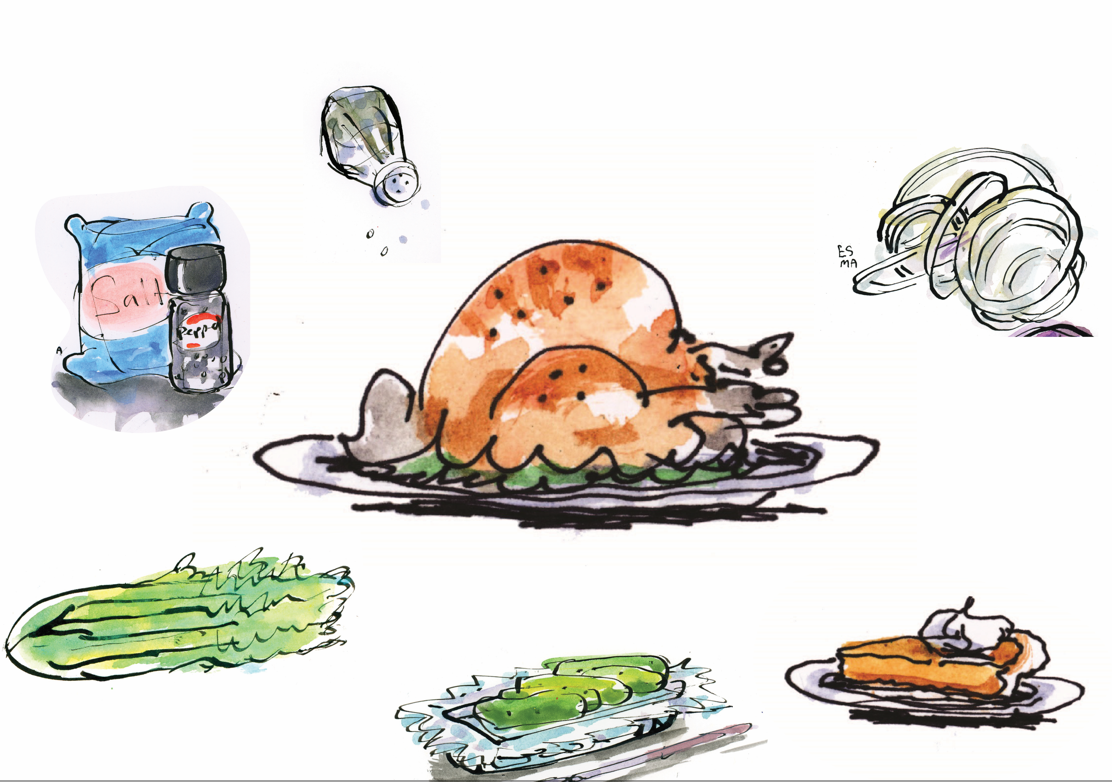
How to Have a Real Thanksgiving—By May Irwin
“The Best Way, She Says, Is to Get An Invitation to a Country Thanksgiving Celebration”
The celebrated cook and comedienne has no connection with the Good Housekeeping Institute, the recipes of which appear elsewhere upon this page. Her ways and her recipes are individual.
If you have any friends who live in the suburbs or country try to get invited to their Thanksgiving feast. It will be a revelation.
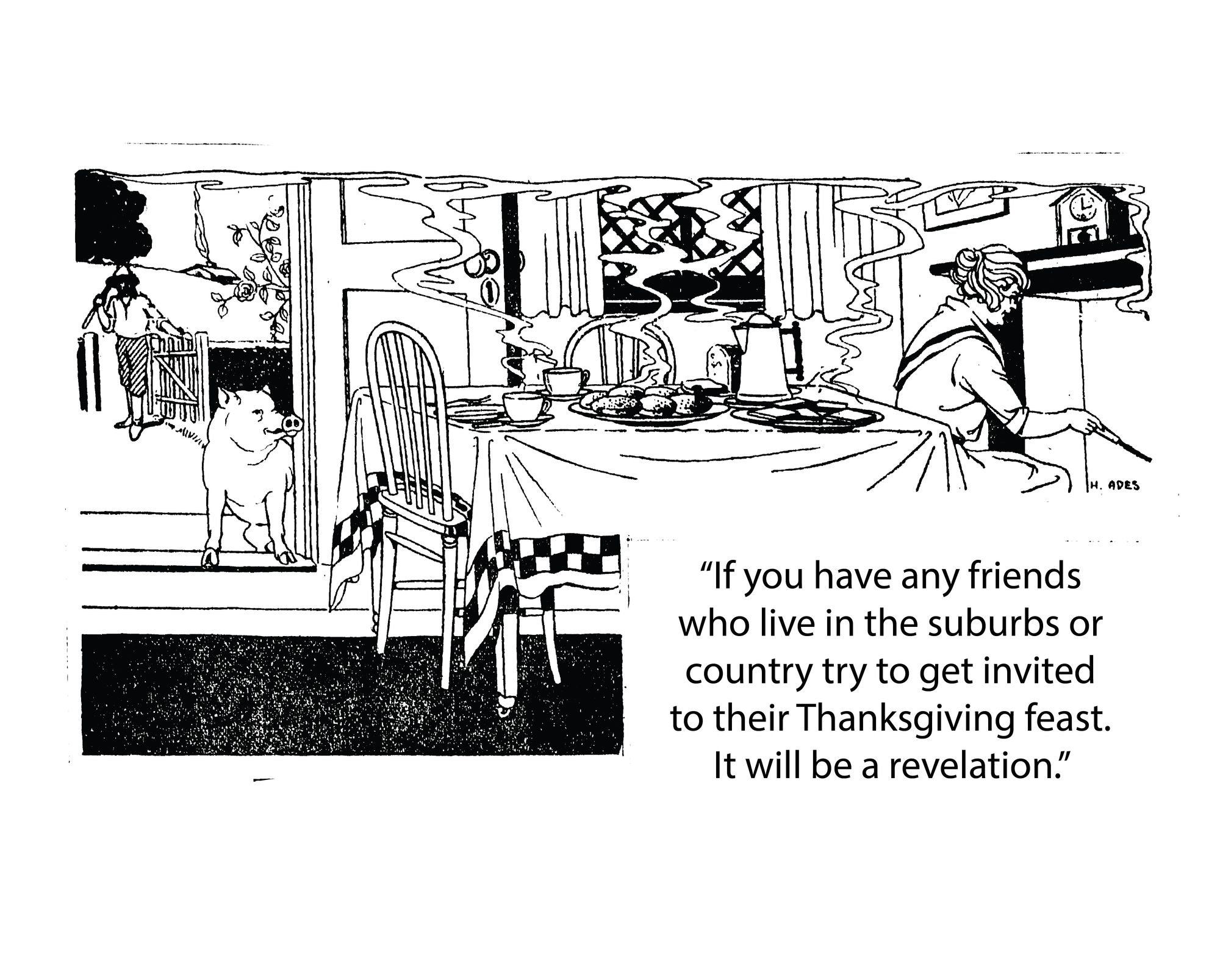
The house’s cosy interior, the pine knots burning in an old fashioned stone fireplace, . . . but why should I try to describe such a scene, when you’ve all probably read Whittier’s Snowbound, and Bret Harte’s Snowbound at Eagles! If you haven’t read them, do, and you’ll know what I’m getting at.
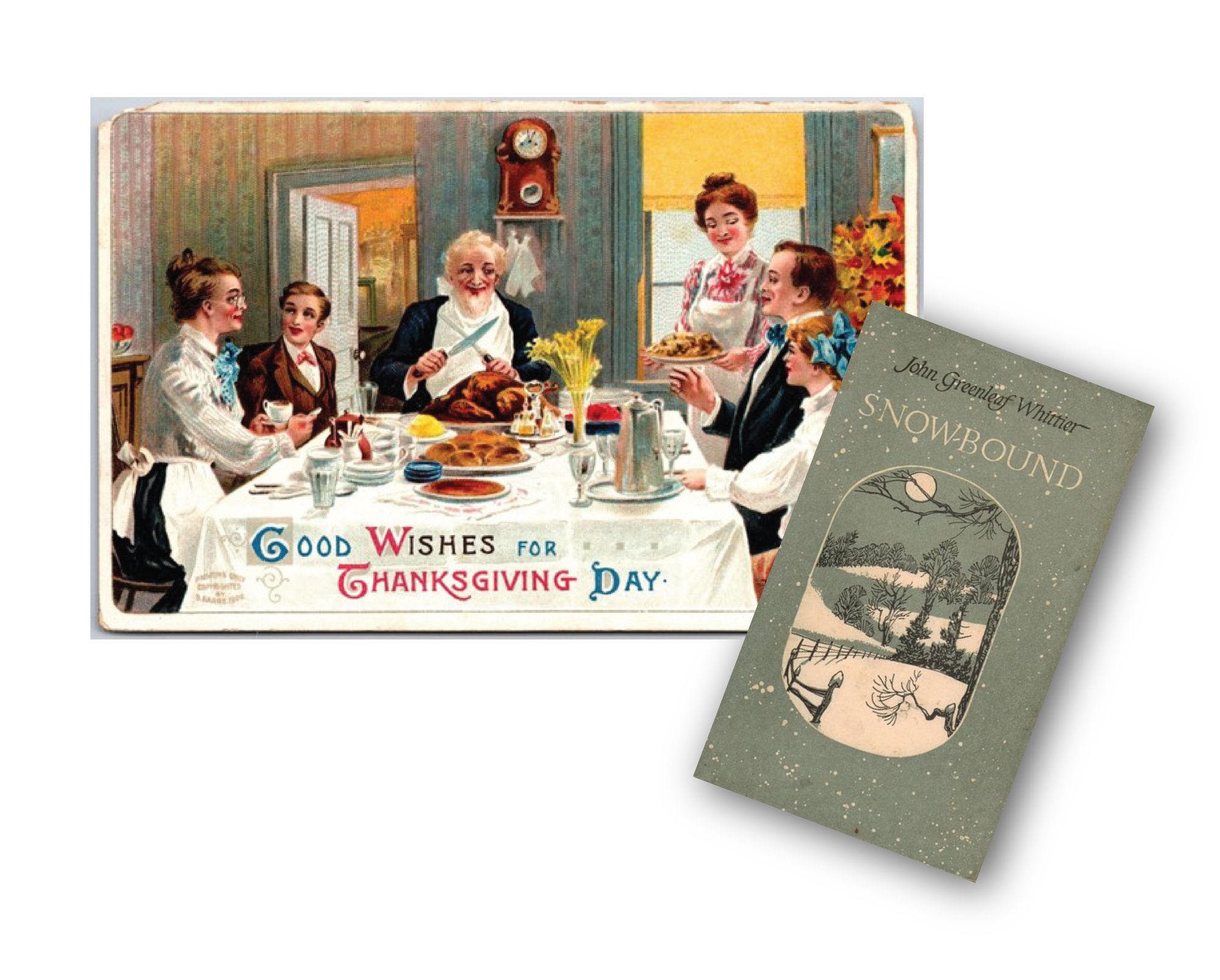
There’s an appetizing aroma of mysterious things cooking in the kitchen, and, amid the circle waiting around the hearthstone, a subdued air of expectancy. Someone said: “Preserve me from my relatives—I can choose my friends,” but I must say that is a sentiment I never could understand. On Thanksgiving Day what could make you happier—if you have a place large enough—than to be surrounded by your relatives and friends when you sit down to a table fairly groaning with good things.
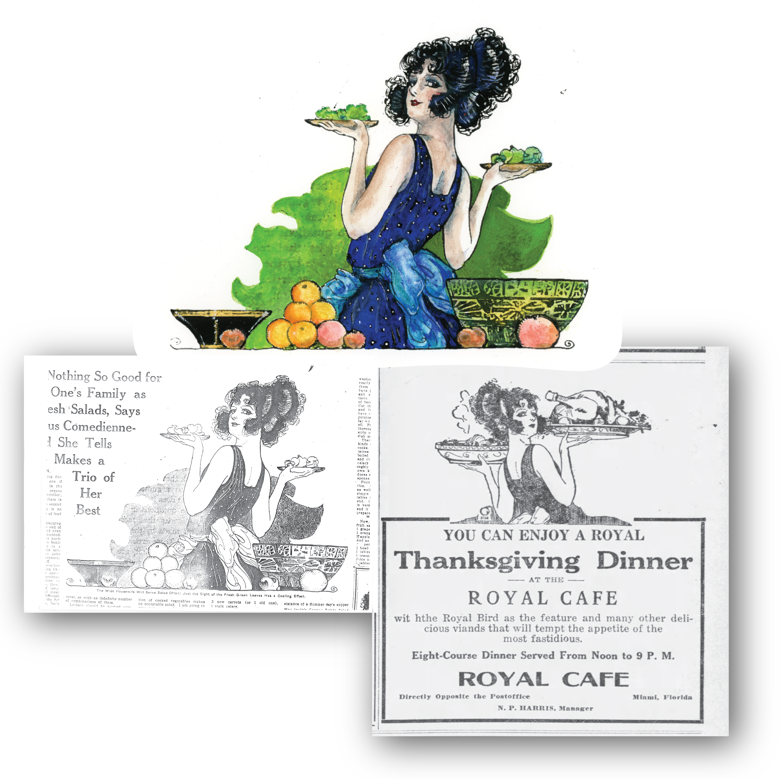
And if you know some poor unfortunate who Is away from home on Thanksgiving Day, invite him to your dinner and save him the tragedy of a restaurant meal on that especial holiday. You’ve no idea how much better your dinner will taste.
I remember one Thanksgiving out in Dayton, Ohio, when my company and I were playing on the road. My two boys were in school back in New York, and the holiday loomed up as a solitary day. I was glad for the usual Thanksgiving matinee, and I tried to look happy as I “made up” in my dressing room. Outside my door I heard a masculine voice say peremptorily: “I’ve got to see Miss Irwin,” and I wondered who it was, because there were strict orders not to disturb the actors before the play. Then there was a knock on the door; my maid opened it, and there stood my eldest son. He had come all the way to have dinner with me.
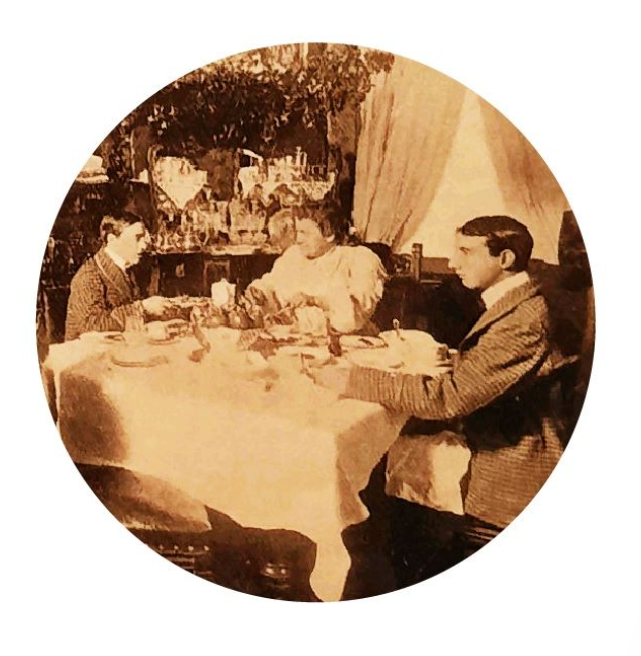
Most holidays on the road, however, are celebrated with great festivities, and I’ve smiled many times at the people who so lavishly pitied us. Some of the happiest memories I have are of just such occasions. I would send to New York for my boys, and invite my company, and after the night play was over we would have a royal feast that would have been envied by these who pitied the “poor traveling vagabonds.” I only hope the memory of those holiday dinners is as pleasant to recall to the members of my company as they are to me.
But to return to our muttons—no turkey—and our Thanksgiving dinner at home. I think the old fashioned menu beats any of the innovations of to-day. The Pilgrims, you know, started with oyster soup, and I hardly think we have improved on them. So have: Oyster Soup, Roast Turkey, with plates of home made pickles, and homegrown celery “settin around.” Boiled Yellow Turnips, Mashed Potatoes, with giblet gravy, Lettuce Salad, served with the dinner, and “Punkin’” Pie.
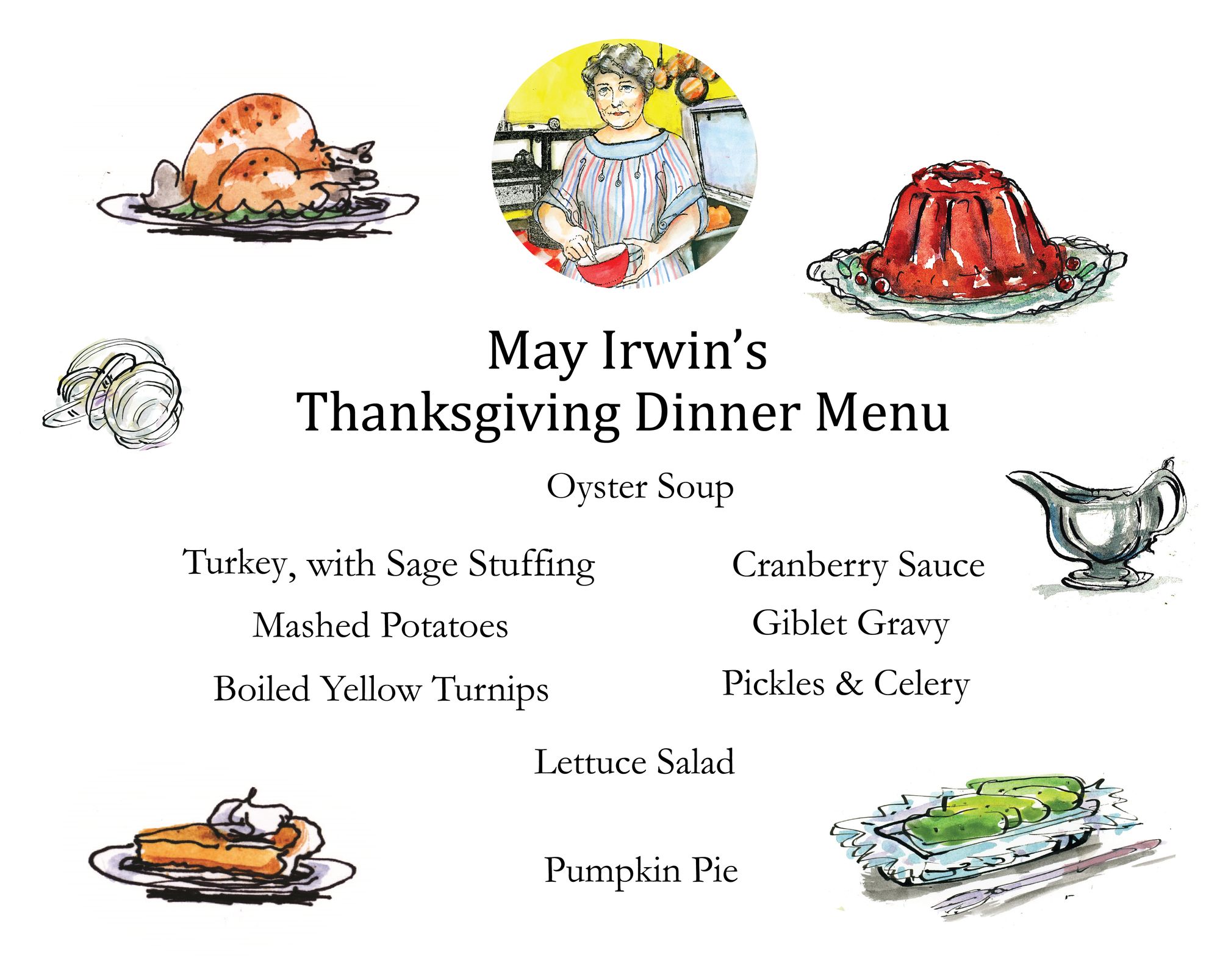
OYSTER SOUP
The old fashioned way of making oyster soup is to put a lump of butter in a frying pan with a tablespoonful of flour. Stir until smooth, add about a teaspoon of chopped parsley and a teaspoon of finely chopped onion. Then cream, if you have it—if not milk will answer. Season with salt and pepper. In a separate saucepan heat the oyster juice, carefully strained, to a boiling point. Add the oysters, after carefully examining them for any little bits of shell, and let them boil until the edges begin to curl, when you add them to the heated cream.
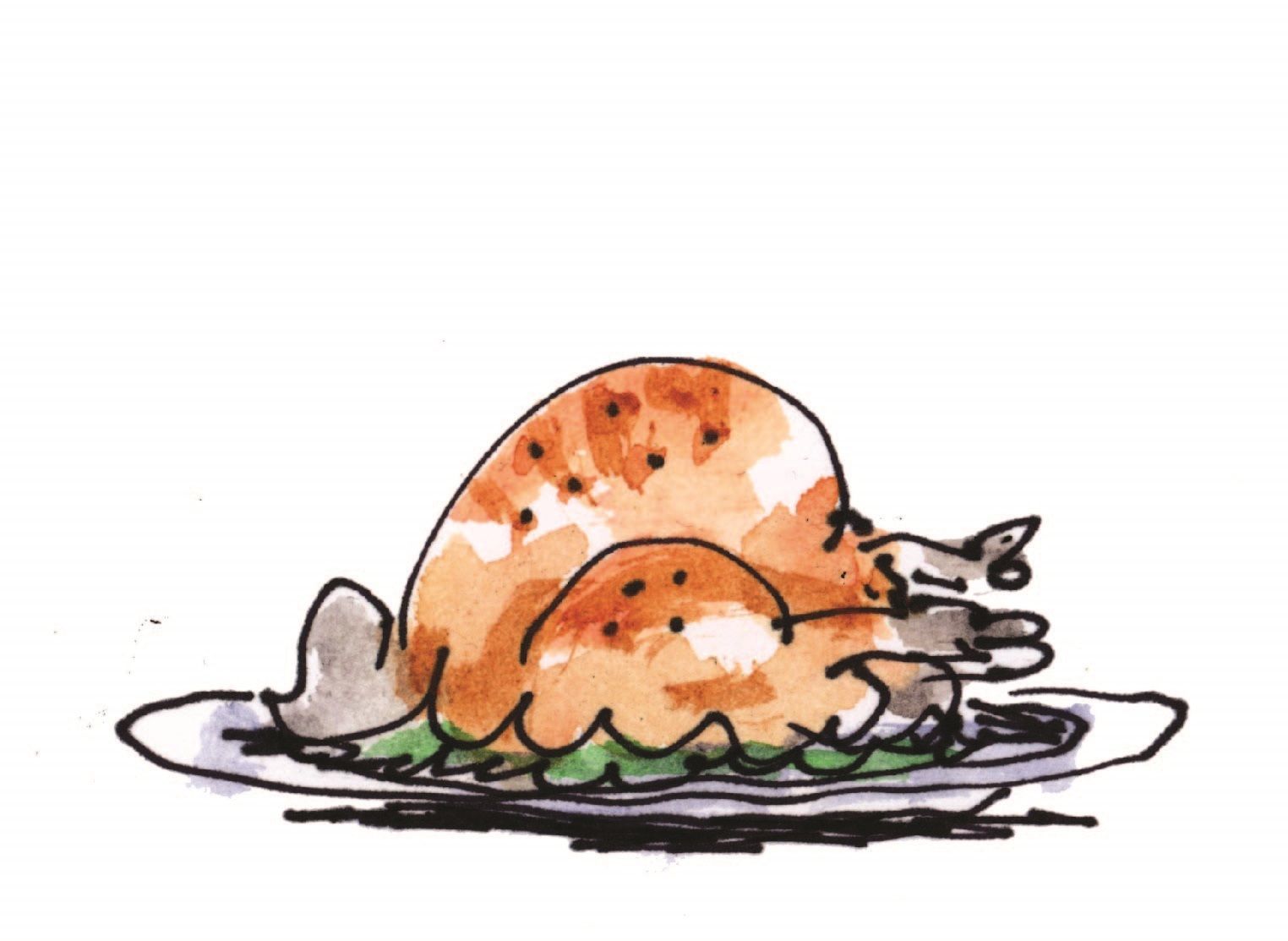
THE TURKEY
Fixing the turkey is an institution. The first thing to do is to thoroughly clean it, washing the outside and wiping it inside with a clean wet towel. Reserve the liver, heart and gizzard. Make the stuffing of:
1 loaf stale bread,
2 tablespoons onion, finely chopped,
½ teaspoon salt,
1/8 teaspoon pepper,
1 tablespoon sage leaves,
1 teaspoon summer savory,
1 egg,
2 tablespoons melted butter,
1 turkey liver.
Cut the crusts off the bread and rub fine, add the finely chopped onion; the raw liver, chopped; the sage leaves, rubbed fine; salt, pepper, and the summer savory, melted butter and egg. Mix these all well with the hands. Rub salt all around the inside of the turkey. Pack in the stuffing and sew up the opening.
When you buy your turkey don’t have the butcher draw the bird, as he invariably makes too large an opening. When you have taken out the trimmings around the neck, fill also with stuffing and sew closed. Rub all over with melted butter, folding the small tip of each wing under the second joint, so it won’t require tying. Take the two legs in your hands, press down hard until they meet and tie them together. Sprinkle salt all over and lay in the roasting pan, in which you have put a teacup of water. Lay with the breast down and turn when the top is light brown, as this keeps the breast from being dry. Roast in a moderate oven two and a half to three hours, depending on the size of your bird.
When the back is brown turn it until it is brown all over, and baste every twenty minutes with a warm liquid made of a cup of butter and a pint of water. This will replenish the gravy in the pan as it boils away.
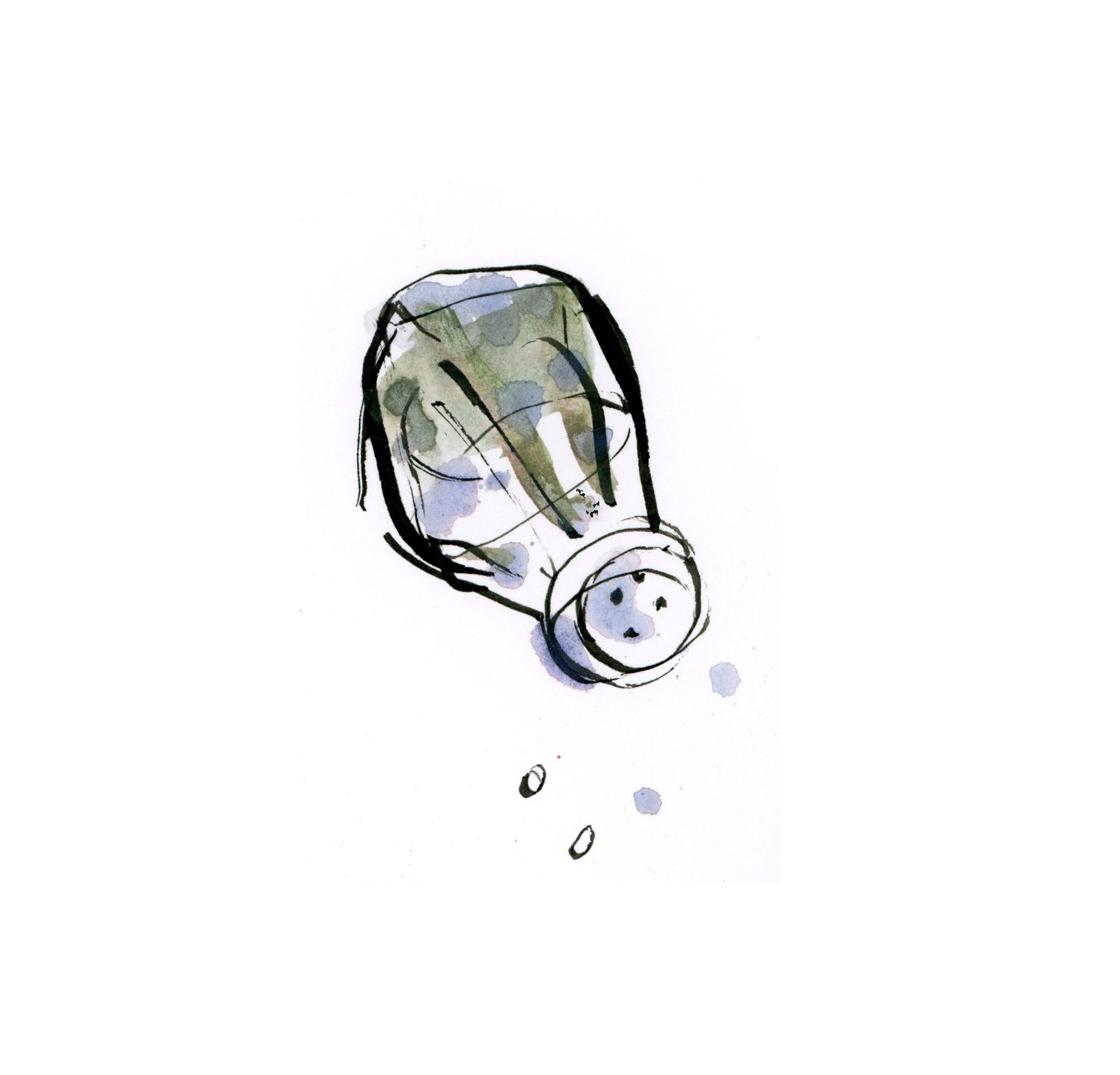
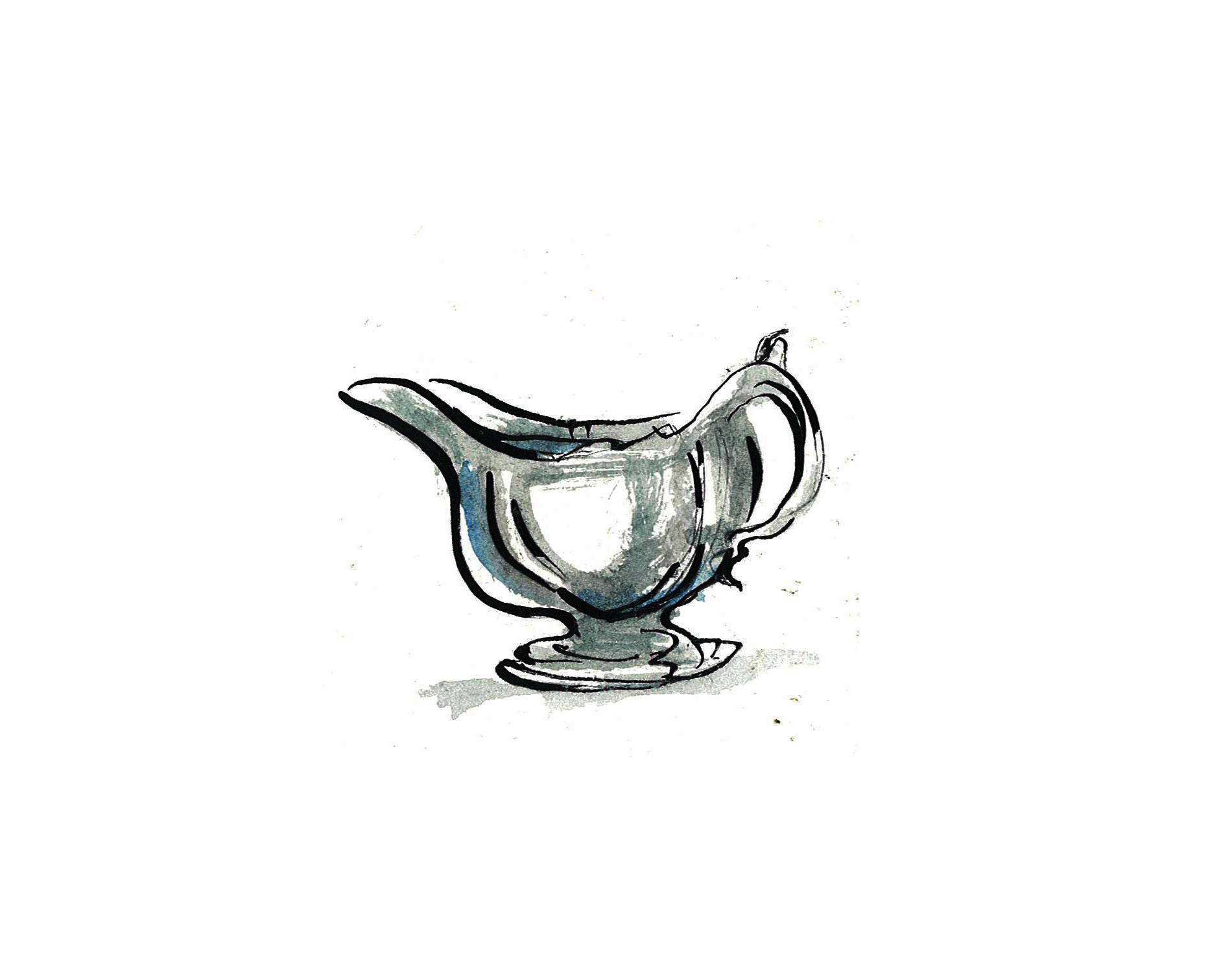
GRAVY
In a separate saucepan cook the gizzard and heart, with water enough to cover them. To this water add one onion, chopped fine. When the gizzard is tender, strain the liquid and chop the gizzard, etc., in a chopping bowl.
When the turkey is done, take out, and put the roasting pan on top of the stove to make the gravy, by adding two tablespoons of butter, two tablespoons of flour rubbed in until smooth, the chopped gizzards, etc., and the soup in which they have been boiled. Stir this well and let cook fully five minutes.
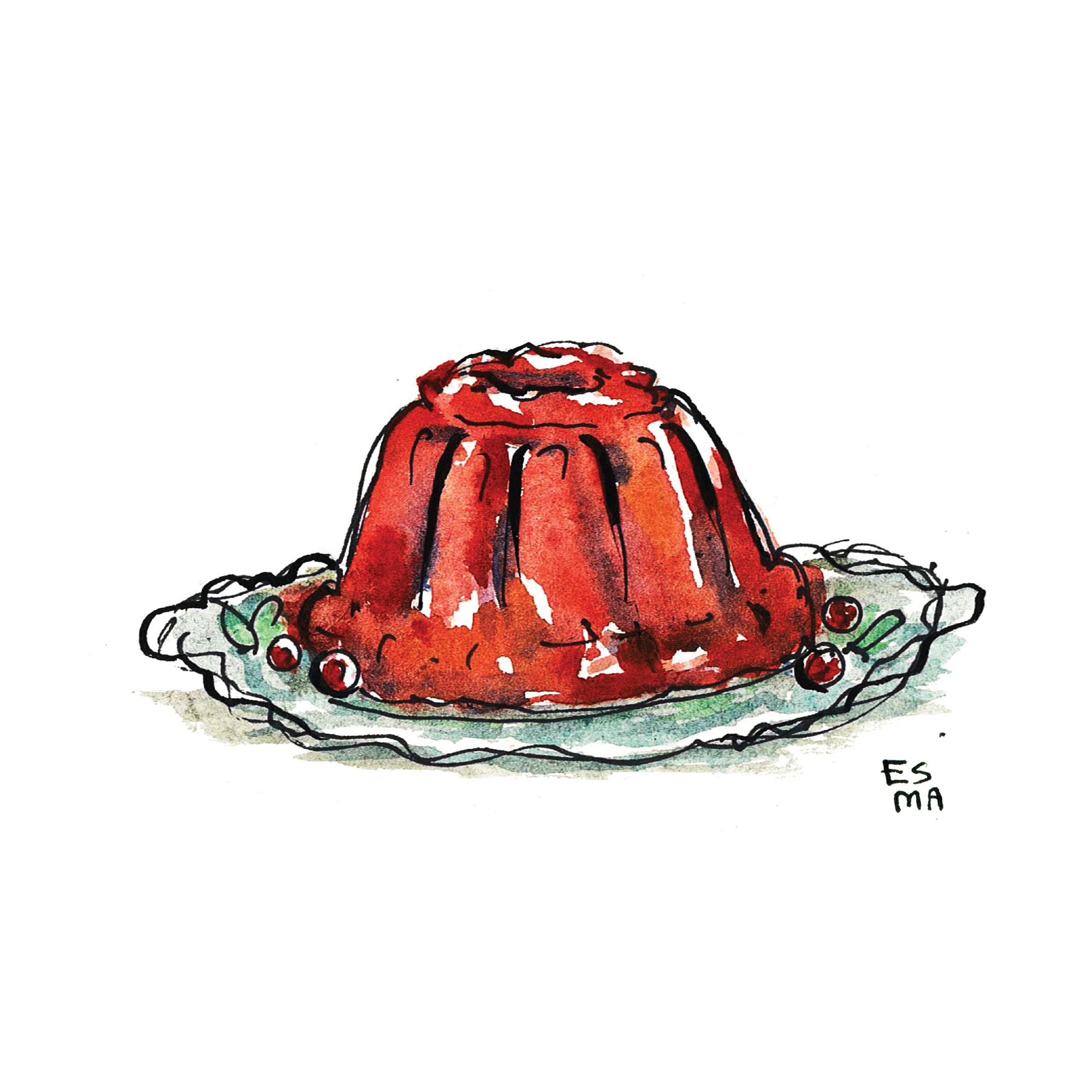
CRANBERRIES
Cranberries can be made the day before. Wash one quart and put on with just enough water to see around them. Add one pound of sugar and let simmer slowly for two hours. Don’t stir with a spoon, if you want the whole cranberries. If you prefer cranberry jelly, don’t add the sugar until the cranberries are cooked; then strain like jelly and use a cup of cranberry juice to a cup of sugar, and boil about twenty minutes. Either way, these can be put in one large mold that has been dipped in water, or in individual molds. I think it’s more sociable to put it in one large mold—and it saves a lot of work for the one who has to wash up the dishes, besides adding color to the plates.
If you don’t know how to boil turnips (in salted water) and serve with butter, you’d better not have them. I’m going to skip to the pumpkin pie.
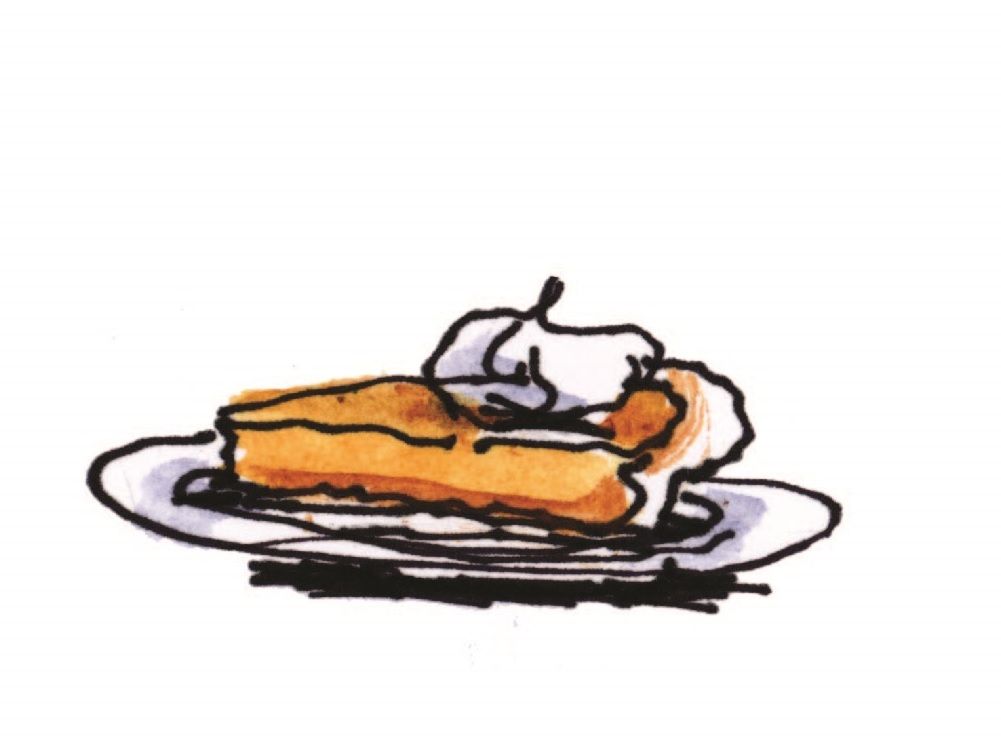
PUMPKIN PIE
1 pumpkin,
4 eggs,
2 cups sugar,
1 teaspoon cinnamon,
1 teaspoon grated nutmeg,
1 teaspoon ginger,
1 cup milk,
Pinch salt.
I told you how to make the crust in my recent article.
Cut up a pumpkin, put in boiling water, and let cook until perfectly soft. Drain and mash well until it is smooth. Now beat four eggs and two cups of sugar together, add to the pumpkin, then put in a pinch of salt, and a teaspoon each of cinnamon, grated nutmeg, and ginger. Scald the cup of milk and add to this mixture. Beat all together, and then add two tablespoons of brandy—if you can get it.
Have two medium sized pie plates lined with paste (as for apple pie). Fill with the mixture and bake until firm (about thirty to forty minutes). Serve ice cold.
Since you’ll need it, here’s her recipe for pie crust. Keep in mind a pumpkin pie only needs the lower crust, so this should make enough for two pies!
PIE CRUST
2 cups flour,
1/2 teaspoon salt,
3/4 cup lard,
1/2 cup ice water.
Sift the flour and salt, and cut the lard into the flour with a silver knife until it is in pieces about as large as a pea. Add about a half cup of ice water (this is the only thing I use ice water for), or just enough to hold the flour together. Divide the dough in half.
Enjoy these previous articles published in TI Life Magazine about May Irwin’s Lost 1922 Cooking Columns:
“Dishing it Up" with May Irwin— New Dish Discoveries!
https://thousandislandslife.com/dishing-it-up-with-may-irwin-new-dish-discoveries/
Mystery Artist Found!
https://thousandislandslife.com/mystery-artist-sound/
"Dishing It Up" with May Irwin— Her Lost Cooking Columns https://thousandislandslife.com/dishing-it-up-with-may-irwin/
“Dishing It Up” with May Irwin: Now for Canning & Pickling https://thousandislandslife.com/dishing-it-up-with-may-irwin-now-for-canning-pickling/
To be informed when the book is released, follow our May Irwin page on Facebook: https://www.facebook.com/MayIrwinMemoryLane
by Emily St. Marie & Karen Killian
Emily St. Marie is an artist and author in the Pacific Northwest. She has a B.A. in Linguistics from the University of Alberta. Her latest artwork and writing can be found in a sampler of short stories and poems called “Ourania's Orrery of Imagination,” now available on Amazon. You can follow her on Instagram or Facebook, or visit her website at www.emilystmarie.com to see her latest work.
Karen Killian is a retired home economics teacher with a B.A. in Elementary Education and a minor in Home Economics from San Jose State College. She moved to Upstate New York from California in 1968. In 1983, Karen became involved in the startup of Captain Spicer’s Gallery, which she managed for the next thirty years. During her time at Captain Spicer’s Gallery, she co-created custom 1000 Island products, along with an extensive line of beautiful stoneware by Louisville Stoneware Company.
Editor's note: In discussing this article I was touched by Karen Killian's memories and I want to share this one as it just like mine, and probably many of you who are reading this article:
“My Thanksgiving dinners (and Christmases) were always special, and the food was so delicious. It was a happy time in my childhood. My Mother loved the holidays and entertaining friends and family— her pies were to die for. It was an amazing tradition. She would get up at 4 am and start the preparations. And it wasn’t easy. In those days, the turkey had to be in the oven for at least 10 hours and my Mother always had a turkey of twenty-five pounds or heavier.” These details of her mother’s devotion to the holiday preparations help illustrate the work that went into Thanksgiving meals back in the day.





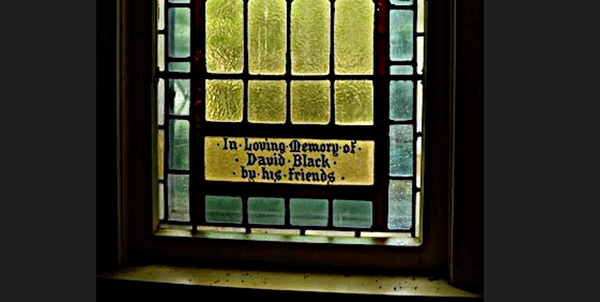
Please click here if you are unable to post your comment.